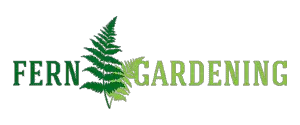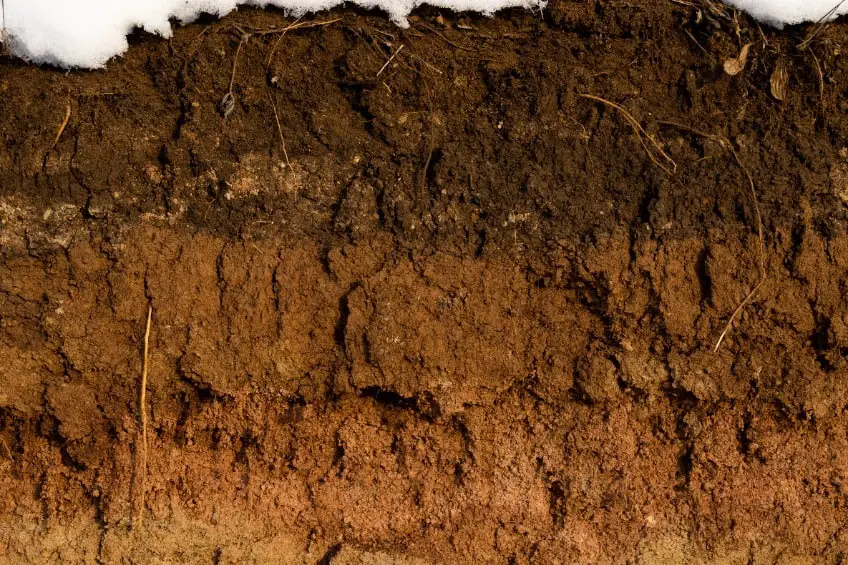
Ferns are incredibly versatile and beautiful plants that bring variety to any garden.
It can be frustrating to find the right plants for your soil, especially if your soil is very clay-like. Ferns favor moist but well-drained soil for the most part, and this is one of the big challenges with clay – breaking up the soil structure enough to allow the rhizomes and roots of the fern to thrive.
The other limitation of clay soil is that it tends to be alkaline. If the soil in your yard is particularly alkaline, you may want to consider specific fern varieties that grow well in these conditions.
We’ll go over four of the best ferns that we recommend trying out if you have very clay-like soil, and end with some tips on improving your clay soil so that your fern garden can flourish.
1. Male Fern
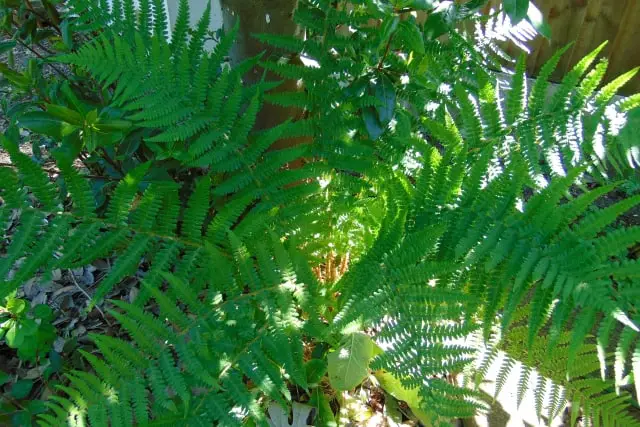
Male fern
- Dryopteris filix-mas
- Deciduous
- Prefers partial or full shade
- Height: up to 1.5 m
- Soil: acid, neutral or alkaline. Moist, poor drainage tolerated.
The Male Fern is a great option if you have clay soil. It is fairly low maintenance, especially once it’s established, and adapts well to most environments. It can survive for brief periods of time in dried-out soil, but you do need to try and keep the soil moist with good drainage since it can’t survive dry conditions for extended periods of time.
The Male Fern also does best in partial shade, though it can survive in full sun. This fern is a great companion to grow under your trees, which is one of the reasons why this plant thrives in the western states.
2. Bird’s Nest Fern
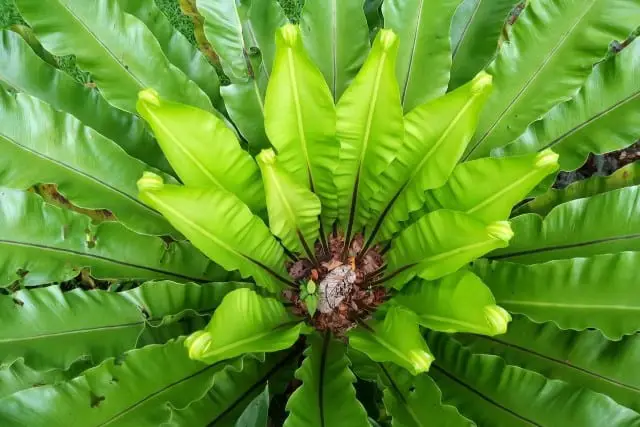
Bird’s nest fern
- Asplenium nidus
- Evergreen
- Partial or full shade
- Height: up to 1 m
- Soil: acid or neutral. Moist, well-drained.
The Bird’s Nest fern is a popular fern to grow and is a must for any fern enthusiast. It is a tropical fern that grows best in warm, humid climates, as it is native to Hawaii and southeastern Asia.
The Bird’s Nest Fern looks quite a bit different from the classic fern shape with long feathery fronds. It has wide, green, simple fronds that typically grow to be between 2 feet long, but some varieties of Asplenium can grow enormous in cultivation, with fronds that can reach over 5 feet long.
This fern can grow well in clay soil as long as it is kept moist. This is not a plant that will survive well in dry conditions and needs frequent moisture. The Birds Nest Fern is an epiphyte and in the wild, it grows by wrapping its roots around trees and growing in the pockets where rainwater can accumulate. You can also grow them this way by wiring them to a tree or stand while the fern establishes its roots.
3. Western Sword Fern
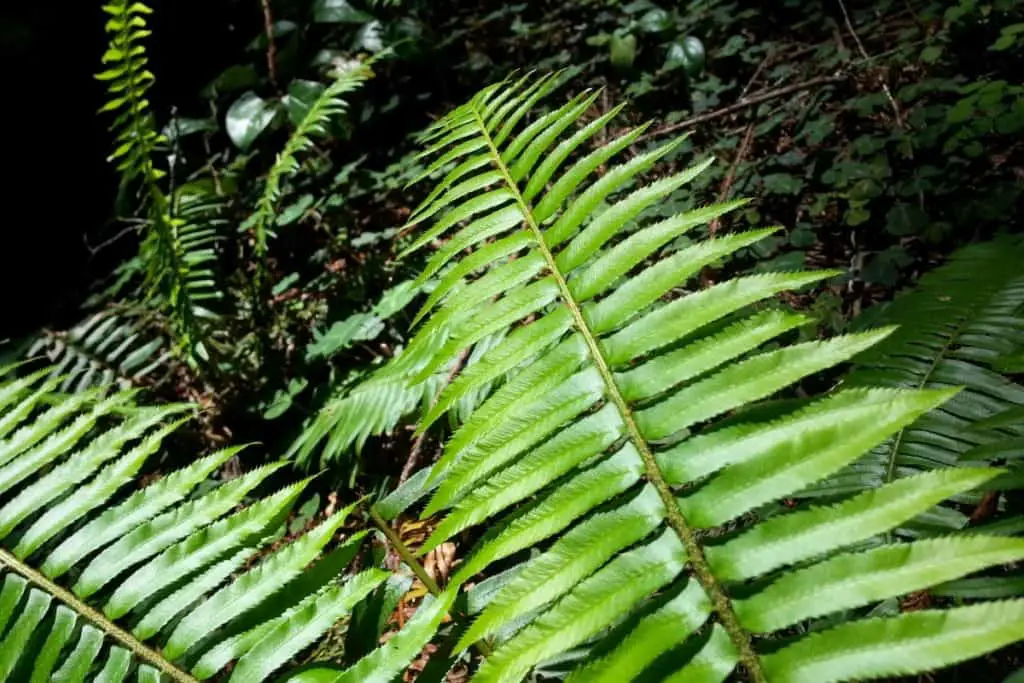
Western Sword fern
- Polystichum munitum
- Evergreen
- Partial or full shade
- Height: up to 1.5 m
- Soil: acid, neutral or alkaline. Moist, well-drained.
The Western Sword fern is an easy fern to grow and is native to much of the west coast of North America, as far north as Alaska, and as far south as Baja California. This is a hardy fern down to about 15 degrees Fahrenheit, and can handle a variety of different soil types as long as they are consistently moist.
They will survive brief periods of dry soil if they’re already established, but you should be watering this fern consistently through dry spells after the first planting.
If you can manage these limitations, this is a great variety to choose and one of the larger species of Polystichum – growing up to nearly 6 feet tall under ideal conditions. The Western Sword Fern prefers full or partial shade, so it makes great ground cover under your trees. It’s also deer-resistant if you’re worried about deer getting into your garden.
4. Lady Fern
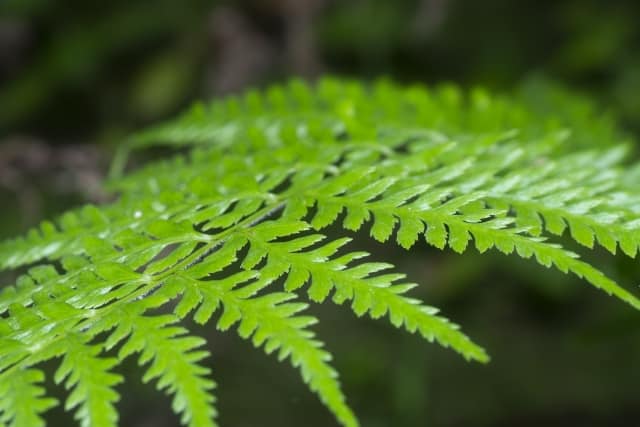
Lady fern
- Athyrium filix-femina
- Deciduous
- Prefers partial or full shade
- Height: up to 1 m
- Soil: acid or neutral. Moist, poor drainage tolerated.
Lady Fern is another great fern to start with. This fern is native to all of the lower 48 states, and can survive in Alaska if given the right conditions. It is also considered to be one of the easier ferns to grow, and there are a few varieties to choose from. All varieties have 2 to 3-pinnate leaves, giving them a lacy look. It also tends to be light green in color.
The Lady Fern prefers full shade conditions but can tolerate the sun as long as it is well watered. It can also handle drier conditions for short periods, though it prefers a lot of moisture. This fern grows slowly, but it is one of the most hardy ferns out there coping with most soil types and tolerating even deep freezes (down to -40° F).
You can use this fern as a great ground cover anywhere there is a lot of shade, and due to its lighter color compared to some other shade plants, it can be a great addition to your garden, even if it has soil with a lot of clay in it.
How to Improve Clay Soil
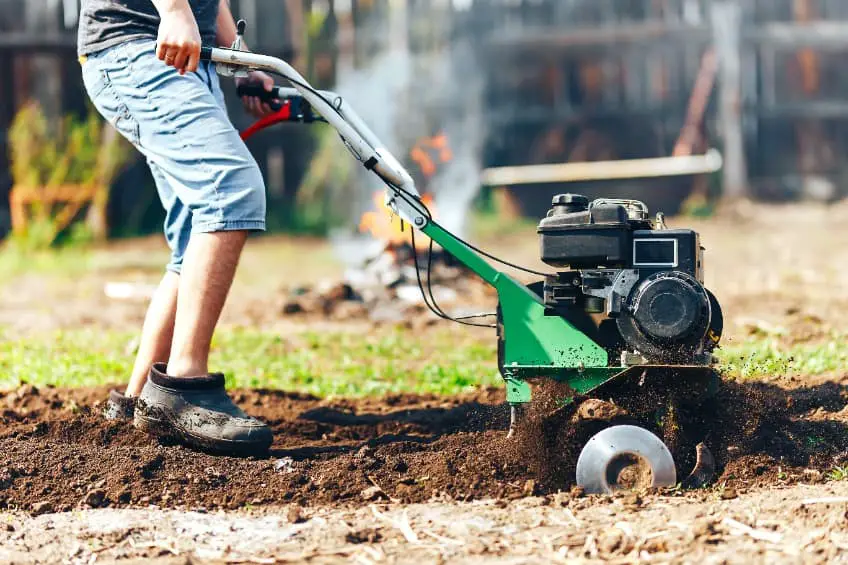
Depending on your garden and what you’re trying to do with it, you may want to consider improving your clay soil.
Most plants don’t do well in soil that has a high percentage of either clay or sand. They prefer a good mix of clay, sand, and organic material. When the soil has too much clay in it, it will stick together and make it difficult for a plant to spread its roots. It also tends to lack some of the organic material that is important for plant growth.
The ferns listed above do well in more clay-like soil but will still benefit from more of a mix. Luckily, if your soil has these issues, it’s a fairly straightforward process to fix it.
The process is called amending the soil, but in simple terms, you’re just taking organic material and mixing it into the clay-filled soil. You can use manure, peat moss, sawdust, leaves, and compost.
You’ll want to spread 2 to 3 inches of your chosen substrate over the soil, then you’ll need to mix the top 6 to 12 inches of soil. This is best done with a rototiller, but you can also do it by overturning the soil with a shovel multiple times. Your garden is immediately ready to receive new plants after this. The soil will eventually settle as the season goes on.
It is usually a good idea to spread some compost over your garden once a year to help maintain a healthy balance in the soil as well.
The challenge with clay soil is poor drainage and high pH, but the Male, Lady, Bird’s nests, and Western Sword ferns are four great choices to cope with these conditions. By improving the soil, many more options open up.
